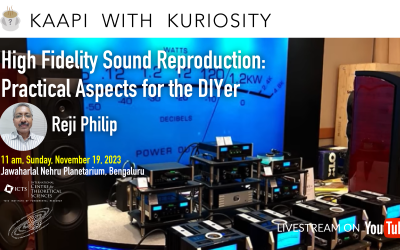Abstract:
The inception of sound reproduction technologies can be traced back to more than a century and half. Subsequently, significant advancements have taken place in this field. The era of wax cylinders and phonographs has been supplanted by high-fidelity digital files and top-tier audio equipment. In fact, even some mobile phones now serve as high-quality audio players. However, there remains a deep sentimental attachment to the older technologies, particularly among senior citizens, who hold their vintage sound equipment dear to their hearts. This presentation will delve into a chronological history of both the analog and digital avenues of sound reproduction. The scientific underpinnings of why some traditional technologies like vinyl records and cassette tapes are deemed superior to their modern counterparts, such as Compact Discs, by a subset of audiophiles, will be explored. Comprehensive guidelines will be provided for creating high-quality audio systems, including 2.0 and 2.1 setups, as well as audio-video systems encompassing formats like Dolby Digital, DTS, and Dolby Atmos, for home-based music enjoyment and cinematic experiences. These guidelines will make use of readily available electronic components found in both physical electronics stores and online markets, offering a cost-effective alternative to commercial offerings. The presentation will also feature a demonstration of a home-built 2.1 audio system designed to deliver high audio quality.
About the Speaker:
Reji Philip is a professor of Light and Matter Physics at the Raman Research Institute. He has nurtured a deep passion for music and audio systems, a hobby he has ardently pursued for over three decades. His enthusiasm leads him to experiment with a wide array of audio amplifier designs and loudspeaker arrangements in his home setup, all in pursuit of achieving the pinnacle of high-fidelity audio.



